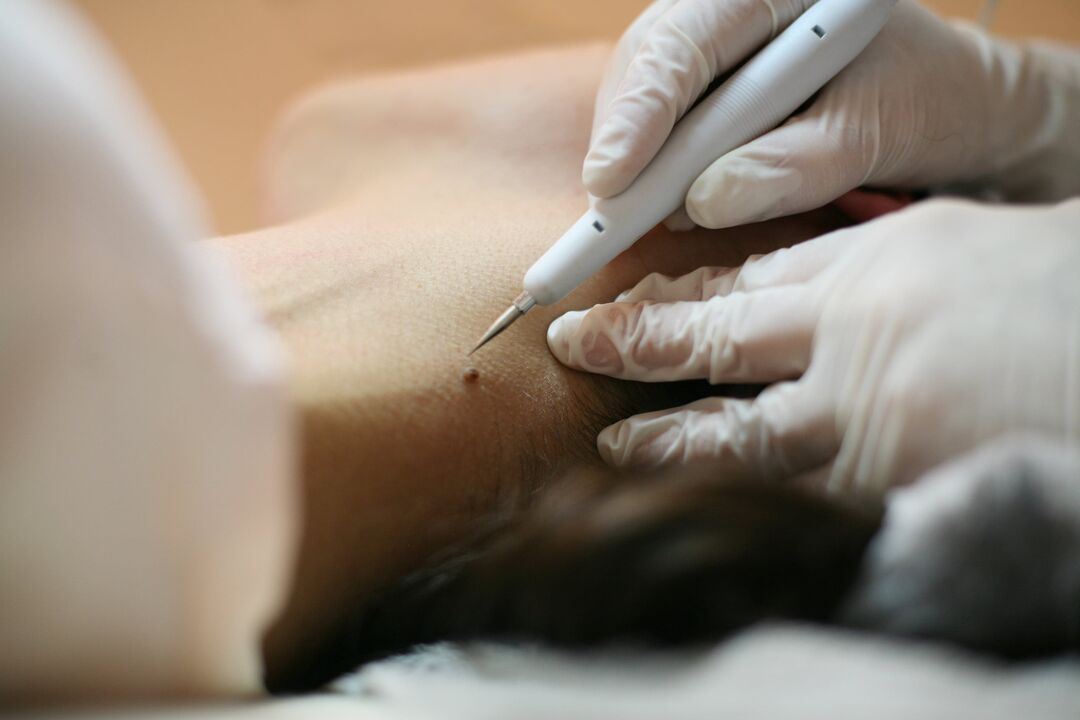Human papillomavirus (HPV) is one of the most common viral pathogens on Earth.

According to medical statistics, 80-90% of people on the planet are carriers of HPV, many of whom are unaware of the presence of papillomavirus in their own bodies. This is due to the fact that by penetrating the patient's blood, HPV can remain in a latent (inactive) state for a long time, slowly affecting the basal cells of the epidermis while not visually manifesting. We will try to consider the mechanisms of infection and the symptoms of the disease, and figure out how to cure human papillomavirus quickly and effectively.
How does the human papillomavirus spread?
In answer to the current question of human papillomavirus infection, it is essential to mention the three main mechanisms by which the virus agent enters the body:
- How to contact- by direct contact with the epidermis of the wearer. The risk group is massage therapists, beauticians, dermatologists, etc. ;
- Intermediate (household) mechanism- includes the transmission of papillomavirus through household items - towels, combs, public transport barriers, etc. ;
- Sexual path- unprotected sexual contact with an infected person provides an almost one hundred percent chance of the papillomavirus penetrating the body, while pathogen subtypes such as human papillomavirus type 31 in women can be transmitted even when a condom is used.
Symptoms of human papillomavirus may not appear in men or women until certain conditions or conditions occur. Such factors are considered to be secondary causes of papillomavirus:
- Decreased immunity;
- Violation of skin integrity - injuries, microcracks, scratches, wounds, etc. ;
- Stress and neuro-emotional overwork;
- Weakening of the body in the background of an inflammatory or infectious process;
- Hormonal disorders;
- Violation of personal hygiene rules.
The only sign of papillomavirus is the development of specific skin tumors, which are mostly benign but require mandatory medical supervision. In the presence of at least one of the above factors, skin growths occur within 1 to 6 months after the patient's initial infection. This is how long the latency of the papillomavirus lasts.
Why are different types of human papillomavirus dangerous?

To determine how to get rid of human papillomavirus and whether it is worth taking therapeutic measures at all, we will figure out what this viral agent can be dangerous and what serious consequences it can have. People often do not pay enough attention to skin growths such as papillomas and warts because they are considered harmless defects. Only a noticeable (frontal) localization of the neoplasm that causes aesthetic problems can prompt the patient to seek professional advice. Meanwhile, certain types of human papillomavirus are considered a pre-cancerous condition and can be transformed into malignancies.
Modern medicine has about 120 types of papillomaviruses that determine the localization, size, and oncogenicity of epidermal growth. We will try to figure out which types can only be considered an aesthetic defect and which ones require immediate treatment:
- Papilloma virus types 1, 2, 4.The virus-induced agent leads to the formation of plantar warts, which can grow over time and spread to healthy tissues, making it difficult for the patient to move;
- Types 2, 4, 26, 27, 29, 57 of papillomavirus.It triggers the development of common or vulgar warts, which most often affect the skin of the hand.
- Papilloma virus types 3, 10, 28, 49.This is the main reason for the appearance of flat warts, which most often affect children and adolescents, hence the second name - youthful;
- HPV type 7.It forms special papillomas on the hands of an infected person, called "butcher warts";
- Types 2, 3, 5, 8-10, 12, 14, 15, 17, 19, 20, 36, 37, 46, 47 and 50 of papillomavirus.There are several groups of viral agents that induce epidermodysplasia veruciform while being exceptionally benign formations;
- Human papillomavirus types 6 and 11 and 42 and 54.HPV is a more dangerous group that forms genital warts on the genitals and mucous membranes. Such increases may undergo a malignant transformation;
- Papillomavirus is types 16, 18, and most subspecies 30-67.This group of viral agents has a high level of oncogenicity, which is manifested in relation to the internal genitals. Thus, papillomavirus type 33 causes the development of flat warts and cervical dysplasia in women, as well as papillomavirus type 18, which can lead to cervical cancer;
- Papillomavirus type 51 and types 45, 52, 54, 56, 66, 68.Human papillomavirus type 52 and other aggressive agents in this group can cause cervical or vaginal cancer and oncology of the external genitalia and anus.
It is to be understood that these are not all HPV subspecies known to science, but the species listed above can be confidently attributed to the most common.
How can human papillomavirus be determined in women and the stronger sex?
Diagnosis is a mandatory step in a doctor’s visit if papillomas form on the skin or mucous membranes. This is a danger that the papilloma will be confused with another skin problem. While in most cases it is asymptomatic, in women, human papillomavirus is often detected only for planned or other reasons in a gynecological examination.
Skin growths can be distinguished by a simple examination, which is confirmed by microscopic analysis of the epithelium. However, the final diagnosis can only be made after PCR diagnosis, which allows the presence of papilloma virus in the patient's blood to be determined. If a malignant course of genital papillomas is suspected, additional examination is often required - a tissue biopsy.
Human papillomavirus treatment
In answering the question of curing papillomavirus, it should initially be assumed that simple removal of the skin tumor will not permanently solve the problem because the viral agent remains in the blood. Unfortunately, to date, medicine has not developed an effective method to completely cleanse the human body of the virus, however, strengthening immunity and rational hygiene do not allow for the active multiplication of HPV and lead to the development of skin defects.
There are two main directions for the removal of papillomas with different localizations:
- Treatment of human papillomavirus with folk remedies;
- Hardware removal of benign tumors.
Treatment of papillomavirus with folk remedies
Folk recipes recommend the use of fresh celandine juice and iodine and vinegar solutions to burn papillomas. Such methods are based on the simple application of an agent to the neoplasm and then its rejection. It should be borne in mind that this practice has limited effectiveness and can lead to scarring or scarring. A more gentle option is to apply the garlic cut regularly to the skin outgrowth, which may not bring the desired result, but certainly does not harm the patient’s health.
The use of decoctions and infusions of herbs such as wormwood, dandelion, tricolor violets, etc. , allows you to strengthen the immune system and provide natural resistance to HPV. Treatment of human papillomavirus at home can also be done with the help of special pharmacy ointments, creams and patches.
How to cure human papilloma by hardware methods

Modern medicine offers a number of effective hardware options for getting rid of papillomavirus from a patient, however, laser eradication of tumors is the "gold standard" in this regard. The method is effective, painless and simple. Manipulation takes only a few minutes without affecting the surrounding epidermal structures. This approach not only protects the patient from unwanted scars and scars, but also significantly reduces the likelihood of recurrence.
The multidisciplinary clinic offers laser removal of papillomas and warts to its clients from anywhere with the latest medical tools. The training of our specialists is complemented by many years of experience and an individual attitude to each client.














































































